Draft Day Debate: First Base in the First Round – Fielder, Votto or Pujols?
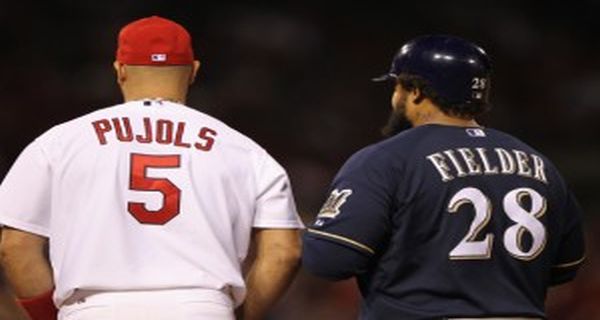
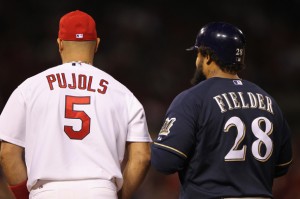
According to the average draft position listed at fantasypros.com, which combines ADP from CBS, Y!, ESPN and MDC, Albert Pujols, Joey Votto and Prince Fielder are all worthy of first round picks in even the shallowest of leagues, the ten-team mixed league. And if you bought our Draft Guide, you’d see that we have them all ranked as top ten players as well. But if you’re faced with choosing one of the three, who should you go with? John Hoey (@JohnnyCrashMLB), Andrew Miller (@44AMiller) and Brett Talley (@TheRealTAL) are here to make the case for each guy. See which argument you think is most convincing.
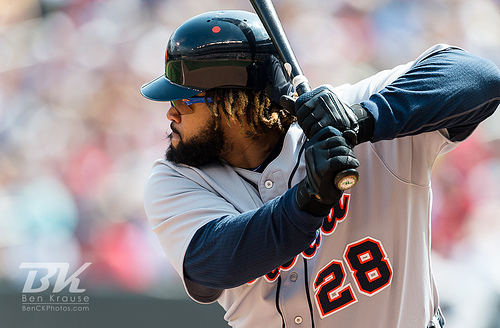
The Case for Fielder by John Hoey
Prince Fielder is the blueprint of durability and consistency out of these three first basemen. Prince is the youngest of the three, and there is nothing that fantasy owners cherish more out of first round picks than durability and consistency, straight up knowing what you are getting out of that valuable selection.
Fielder has played in every single game over the last four seasons with the exception of one. So you can put him at 1B after draft day and never look at it again. Pujols has dealt with several injuries over the past couple of seasons and is entering his post prime years (regardless of age speculation; according to MLB he is 33 entering 2013). Votto missed a chunk of time with an knee injury that required surgery last year and has only driven in 100 runs twice.
Last year Fielder crushed 30 HR and 108 RBI at a .313 clip with a .412 OBP, and .528 SLG, while having more walks than strikeouts (85 to 84, respectively). He did all of this with Delmon Young protecting him in the lineup. This year he will now be protected by Victor Martinez who hit .330 in 2011 with over 100 RBI and 40 doubles. It’s safe to say Fielder will see more friendly pitching in 2013 with pitchers knowing they can’t exactly pass the buck to the next hitter now that Martinez is back.
To state it simply, your first round choice can be a make or break decision. When I choose my first round pick I look for durability and consistency, and when you stand Fielder, Pujols, and Votto up against those two critical criteria, your safest and most secure bet is Fielder. Say no to Votto, and don’t take King Albert; stick with the Prince.
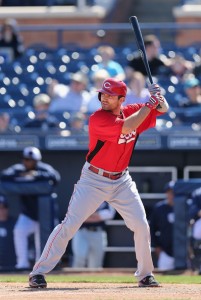
The Case for Votto by Andrew Miller
You used to be able to draft Albert Pujols first or second overall and know he’d give you over a .300 average, 40 homers, 120 runs and RBIs and even a few steals. You could draft Prince Fielder and know he’d have a shot at 50 home runs. Now those days are gone or at least not near as close to a certainty. What is a certainty is Joey Votto, who should be your top choice at first base.
Votto has led the NL in OBP each of the last three years and has hit .324, .309 and .337, respectively, in those seasons. He has averaged 27 homers a year in only an average of 141 games a season, a number brought down by his playing in only 111 games last year. In 2010 and 2011, his last two non-injury shortened seasons, Votto topped 100 runs and RBIs in both seasons – something Fielder’s never done in back-to-back years and Pujols hasn’t done since 2009-10. Votto also stole 16 and eight bases, respectively, in 2010 and ’11, so he contributes there as well when Fielder doesn’t.
Votto now has OBP machine Shin-Soo Choo leading off a loaded Reds lineup, anchored by Votto, that will score a bunch of runs this year. He plays in a GREAT hitters’ park, while Fielder hits in a mostly neutral park and Pujols plays in an extreme pitchers’ park. Votto’s only 29 and is capable of putting up numbers he hasn’t before due to a great batted-ball profile and great plate discipline, while Fielder’s and Pujols’s best years are behind them. Draft Votto with confidence.
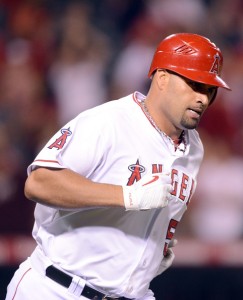
The Case for Pujols by Brett Talley
I proved that you’re wrong, and if you’re wrong, I’m right. – Nick Naylor in Thank You for Smoking
First of all, if you’ve never seen Thank You for Smoking, rent it or download it or something. It’s great. And if you do, you’ll meet Nick Naylor, the main spokesman/lobbyist for Big Tobacco. Naylor is the master of spin and utters the above-mentioned quote when trying to teach his son how to win an argument. The lesson is simple, make you opposition’s position appear wrong, and it won’t matter if you’re right or not. So allow me to tell you why you shouldn’t draft Fielder or Votto.
Let’s begin with Fielder. The biggest concern is that he simply isn’t putting balls in the air like he used to. His fly ball percentage has gone from 43.1% in 2009 to 39.7% in 2010 to 37.1% in 2011 all the way down to 33.3% last year. That is not a trend you want to see from a power hitter. He’s turned most of those fly balls into line drives. And his contact ability has improved. As a result, the .300+ average isn’t going anywhere. But if the fly ball rate doesn’t tick back upwards, there’s a chance that Prince doesn’t get to 30 home runs.
John made the indisputable point that Fielder is easily the most reliable of these three options because of the fact that he has missed just one game in the last four seasons. It’s true, if you draft Fielder, you can put him in your 1B slot and leave him there with no concern. But I’m just not sure you’re going to be getting quite the same power guy in that slot that you might expect.
The other point John made was that Fielder may be boosted by the protection of Victor Martinez compared to the “protection” he had with Delmon Young hitting behind him last year. But I would argue that the benefit Prince will gain from having Martinez behind him will do nothing for his fantasy value.
Tom Tango did a very nice study on lineup protection and found that while hitters who have better protection are more likely to draw more walks, they are not more likely to produce better on balls in play. Read the article for the full explanation, but the idea is that pitchers do tend to issue more walks to hitters being followed by good hitters, but there is simply no evidence that well-protected hitters see an increase in production on balls in play. With that in mind, you can bet on Fielder drawing a few more walks this season and putting fewer balls in play. That means fewer opportunities to hit home runs and drive in runs, which are arguably Fielder’s two biggest fantasy assets.
As for Votto, I would make an argument similar to the one I just made in opposition of Fielder. The argument is that Votto walks too much. It seems counter-intuitive to say that walks are a bad thing for a hitter because we generally associate good plate discipline with a batter’s overall skill. And rightly so. But I think there may be a threshold issue in that a high walk rate can end up hurting a fantasy player’s value. At a certain point, a hitter can take so many walks that he simply isn’t putting the ball in play enough to reach some of the marks we need players to reach in roto leagues. If you want to draft Votto over Fielder or Pujols, you need him to hit at least 30 home runs and drive in 100 runs, both of which are things he was not on pace to do before injury last season. And he failed to hit 30 home runs in 2011 (and barely broke the 100 RBI mark) despite having the sixth most plate appearances in the league in 2011 (719 PA).
Look at the significant improvements Votto has made as far as plate discipline is concerned in the last four years:
|
BB% |
Swing% |
Contact% |
SwStr% |
|
| 2009 |
12.9% |
47.2% |
76.3% |
10.8% |
| 2010 |
14% |
47.9% |
77.7% |
10.4% |
| 2011 |
15.3% |
43.2% |
78.9% |
8.7% |
| 2012 |
19.8% |
38.2% |
80.5% |
6.9% |
Literally every plate discipline metric is trending in the traditionally “right” way. But look at what it’s doing to the number of balls he’s putting in play per plate appearance as well as what it’s doing to his roto numbers per plate appearance:
|
Batted ball per PA |
HR per PA |
RBI per PA |
|
| 2009 |
0.684 |
0.046 |
0.154 |
| 2010 |
0.664 |
0.057 |
0.174 |
| 2011 |
0.676 |
0.04 |
0.143 |
| 2012 |
0.623 |
0.03 |
0.118 |
As you can see, we have this strange situation where a player’s ever-increasing skill set actually hurts his fantasy value. I wish Votto would go back to the 2010 version of himself who still displayed above average plate discipline but who also swung enough and put enough balls in play to be a fantasy monster. But he’s trending in the wrong direction for fantasy purposes.
As for Pujols, his detractors will say his “down” season last year was a sign of his inevitable decline. But as an argument against the rate of that decline, I simply offer you some splits from the first and second half of Albert Pujols’ 2012 season:
|
Triple Slash |
ISO |
wOBA |
wRC+ |
|
| First Half |
.268/.334/.460 |
.192 |
.334 |
115 |
| Second Half |
.305/.354/.581 |
.276 |
.390 |
153 |
Give me the guy who walks enough but not too much who just also happens to be the guy with the best track record in all of baseball.


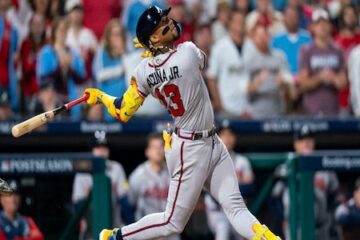
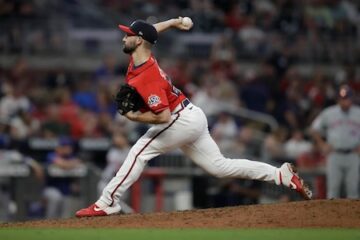
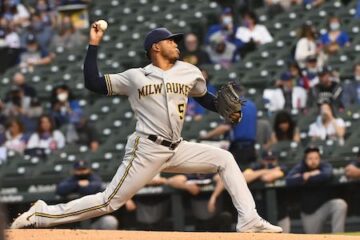
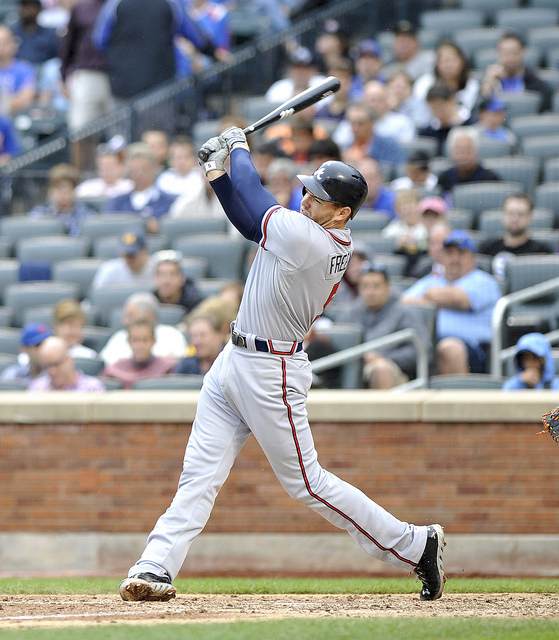
1 Comment
Brett busting out the tables with the hammer of Thor, I’ll get you next time Gadget.